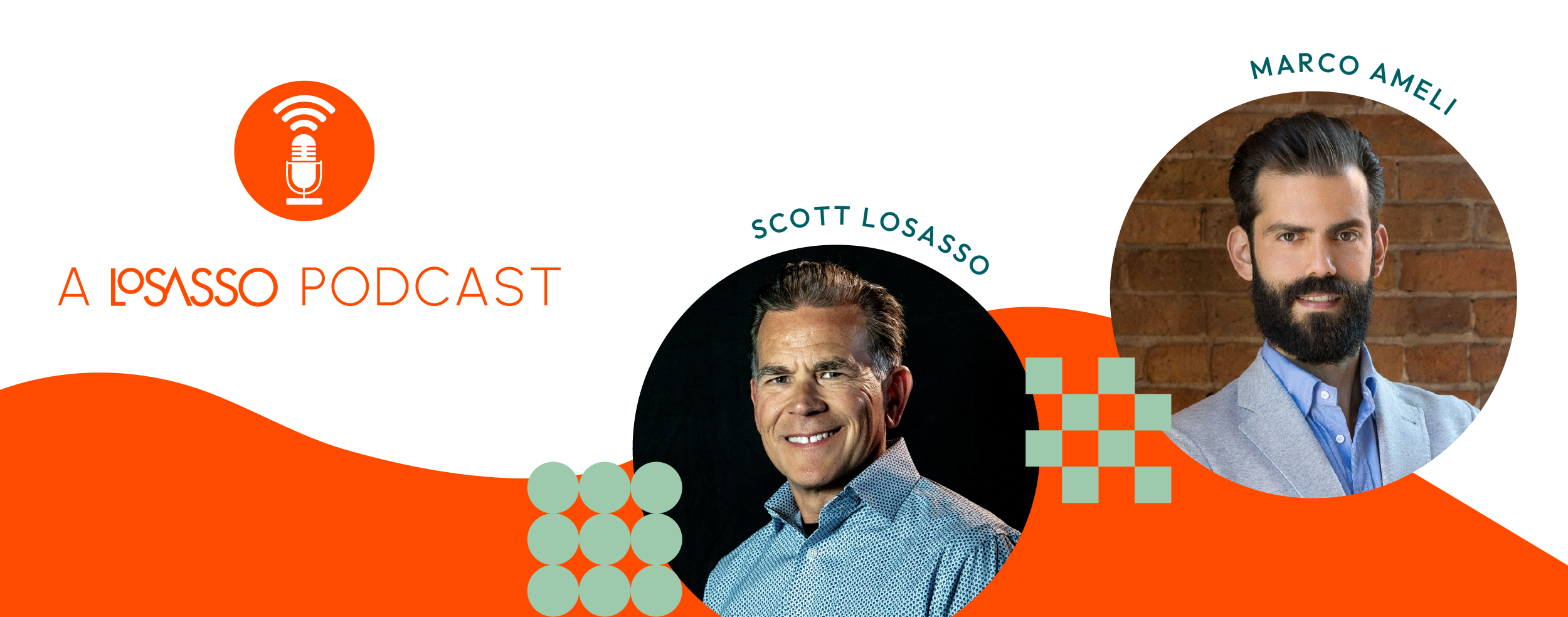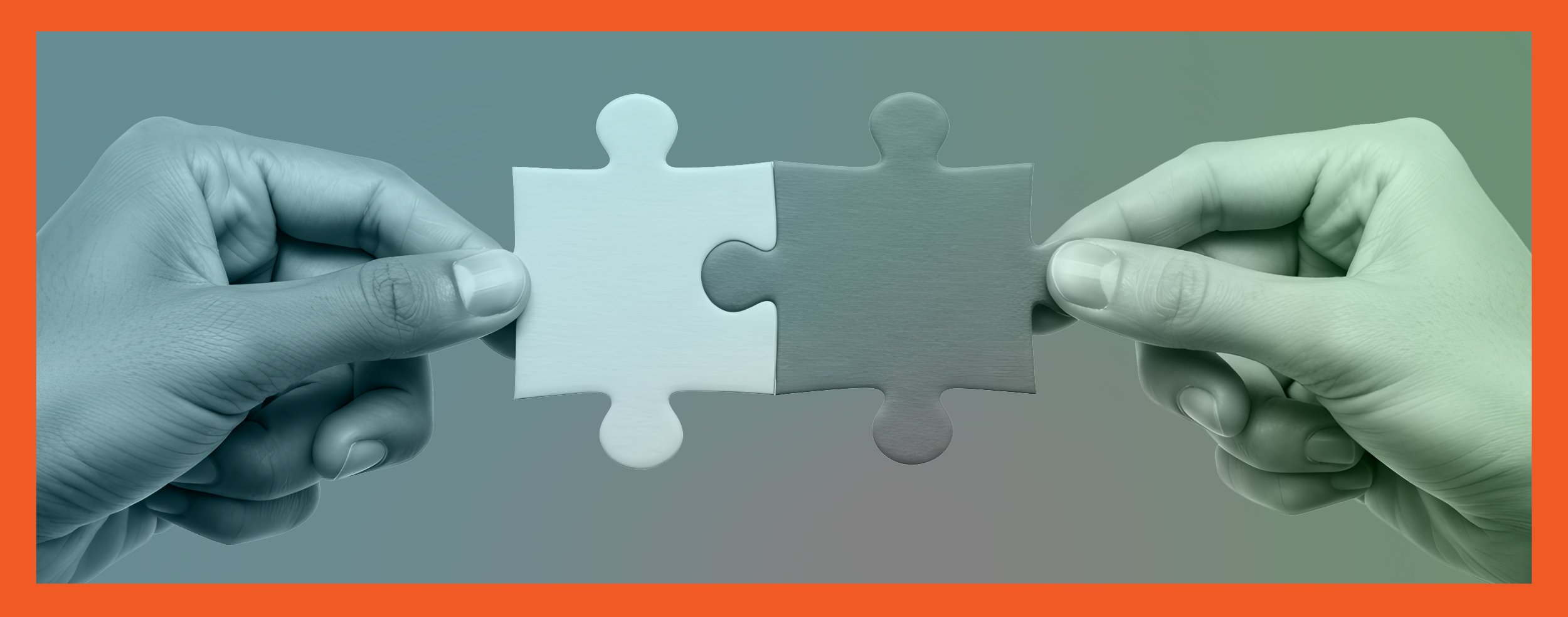Read the transcript
Scott LoSasso (0:06)
Hi, I'm Scott LoSasso, I'm here with Marco Ameli.
Marco Ameli (0:09)
Nice to meet you guys.
Scott LoSasso (0:10)
Marco is the managing director of Practical Machinists. We worked together for many years, building a great digital media property, and we're gonna talk just a little bit about the landscape of the B2B marketing environment. We're here at Emo in Hanover, Germany, companies all around the world in the metalworking industry.
Marco Ameli (0:30)
They're exhibiting here, it's a massive show. I gotta say I've been attending quite a few trade shows. I've never seen anything this big. There's literally like companies from everywhere exhibiting—16 halls, I think.
Scott LoSasso (0:44)
16 halls, it's unbelievable. A lot of walking.
Marco Ameli (0:44)
Yeah, and there's a lot of energy. I gotta say it's exciting to be here to see a lot of international exhibitors and attendees just like sharing the passion, so for sure.
Scott LoSasso (0:54)
And we're actually one of a number of video crews that we see around capturing content, you know, sort of on that, on that mark, you know, Marco, what are, what are the sort of the things that you really see impacting, you know, B2B marketing and media right now?
Marco Ameli (1:08)
Well, there is a lot of focus more on the digital side of it. Obviously the way customers and consumers consume media has changed tremendously in the past five years. It accelerated a lot.
So we're seeing a lot of digital content, digital media being created here, whether that's the exhibitors trying to tackle that internally or having companies such as Practical Machinist creating content for them. I think that's something that caught my attention.
I think it started quite a few years ago—the first time we did it was back in 2018—but the number of players now that take care of that is becoming way, way more than what it used to be.
Scott LoSasso (1:47)
Yeah. And it's really gone, it's shifted from a focus on presenting product to educating professionals.
Marco Ameli (1:53)
Yeah, I mean, you know, it's how the people consume content and also decide on what product to buy, whether that's, you know, consumer level or in the industrial level.
You still want to hear from your peers and trust the people that are in your industry way more than the people that actually make the products and so I think that's one of the shifts that we're seeing is also like these content creators, especially at the industrial level, pretty much creating the content that influences the people that are gonna buy million dollar machines.
Scott LoSasso (2:26)
Right, right, right. So peer to peer and professional to professional versus brand to buyer.
Marco Ameli (2:32)
That's exactly right, and the content has to be educational, you know, like people don't want to see the traditional, you know, sales speech or the brochure—it's more like, hey, here's why you should consider this from a peer to peer. So that's exactly right.
Scott LoSasso (2:47)
You know, I read a data point that said that 91% of B2B manufacturers or, you know, just marketers in general are using content, but 65% of the content really gets wasted and not repurposed.
Marco Ameli (3:03)
A lot of the times these companies fail to post or publish the content that they produce is that often they focus so much on creating content that is like super sophisticated, maybe even too high level.
But the content that is, you know, scrappy, not too high production, it's often the one that really hits the spot more than the high level content.
Scott LoSasso (3:25)
So more real.
Marco Ameli (3:27)
Exactly.
So that's, that's exactly the real content, the authenticity is what right now is what really influences the buyers whether that's at the consumer level all the way again at the B2B industrial level.
So that's, that's pretty much what we're seeing is that, you know, the authenticity of the content, as you said, the peer to peer type of content. That's what really is changing, I think, the marketing landscape.
Also with AI now influencing the way people search and find content; it's getting harder and harder, I would say, for all these companies to get traffic to their website just because people will use ChatGPT or any other, you know, Large Language Model AI to get the content or to get the information.
So often they, if they're not on ChatGPT or AI, they will consume it through social media, whether that's TikTok, Instagram, Facebook. I know that 40%, for example, of our audience, consumes high level industrial content through YouTube. So you need to be able to produce content and publish it where people consume.
Scott LoSasso (4:31)
Yeah, and you did research recently looking at where they were picking that up, so that was the YouTube but like in terms of the social platforms in general, what was the percentage of professional use of those things across the board? Do you recall?
Marco Ameli (4:45)
I would say so it was 40% of people consume their content on YouTube. That's the best platform, especially when it comes to this type of educational content that, it's also very visual.
When it comes to more like short form content, I'm speaking about the, you know, the industrial machinery, machining industry, Instagram is also a very important channel. Also in terms of demographic, you know, the buyer, the decision makers fall into that Millennial age range where Instagram is one of the most popular channels.
TikTok is on the rise, although I think for this specific industry we're not there yet because it's more of Gen Z. And then LinkedIn, of course, is also where the professionals tend to consume more of their time, but I would say YouTube is definitely the most important.
Scott LoSasso (5:39)
You know, we still actually see with other clients that we work with at the agency, Facebook performing really well for certain engineering audiences and, you know, people tend to have their preferred platform.
We do a lot of sort of marketing to engineers and I was surprised to see how strong both the Meta platforms were from the standpoint of even engagement and conversations that happened.
Marco Ameli (6:04)
Yeah, I mean, I gotta say, it was interesting for me because it's been a long journey to Practical Machinist, and we came a long way, but when I started, I remember that most of these companies that we work with were not very trusting the power of social media, that for this industry people wouldn't find important to consume and find information through social media. But that's where we see the majority of the interaction is—Facebook, Instagram—that's where it happens.
Scott LoSasso (6:33)
I do remember conversations with you early on just talking about, you know, how we're going to reach people and just the difference in thought from: are we driving people to our site or are we driving people to our content and not giving any consideration or real care to where they consume it—just that they find it and consume it and then we can measure it.
Marco Ameli (6:54)
Yeah, exactly. I mean, I think as a media professional, for modern media companies it's very important to be what we say, you know, platform agnostic, so you don't want to drive people just to one specific platform.
It's more important to be with your content wherever people spend their time. So some people might prefer to have a YouTube video, some people might prefer the short form content, so it's important to be wherever your audience is and not force the audience to do whatever you want them to do.
Scott LoSasso (7:23)
What are you seeing now in sort of, you know, the drive for lead gen versus other forms of marketing?
Marco Ameli (7:31)
It's a challenge because obviously everybody wants leads, especially when it comes to industrial products, capital equipment—everybody wants to get the lead, especially when they work with media partners—but you can't really harvest that bottom of the funnel if you don't build awareness.
So it's an interesting conversation because a lot of the companies want the leads immediately, but don't understand the importance of, you know, get your brand out there, educate the people, make sure they understand what makes you unique compared to your competitors and why they should consider working with you. You can't approach just one part of the funnel, you have to start from the top to the bottom.
Scott LoSasso (8:15)
It is, it is an interesting conversation and it seems to be one that we have a lot, right, because the buying cycle is long, not everybody's in the market. So to be there at the right time is key, but to be there when they're learning and building preference, building opinion over time, is even really more important.
Marco Ameli (8:35)
Yeah, absolutely. I think actually you hit the right spot—is that people don't always know that they will need something until they have that need.
So if your company is not doing something to be in their mind when that need arises, you're not gonna get the lead. Yeah, so that's, it's a long journey as you said.
Scott LoSasso (8:54)
Well, I'll be looking forward to getting some more of that research that you just finished.
Marco Ameli (8:59)
Should be ready in a month or so, so we'll be sharing.
Scott LoSasso (9:02)
Yeah, let's get it out. And if anybody wants to, you know, get a copy of it, just reach out.
Marco Ameli (9:07)
Absolutely. We'll be sharing it across every single platform.
Scott LoSasso (9:10)
Yeah, that's right. It won't just be on our website.
Marco Ameli (9:12)
No.
Scott LoSasso (9:13)
All right, good chat!
Marco Ameli (9:15)
Good chat too.
Scott LoSasso (9:16)
Thanks.


